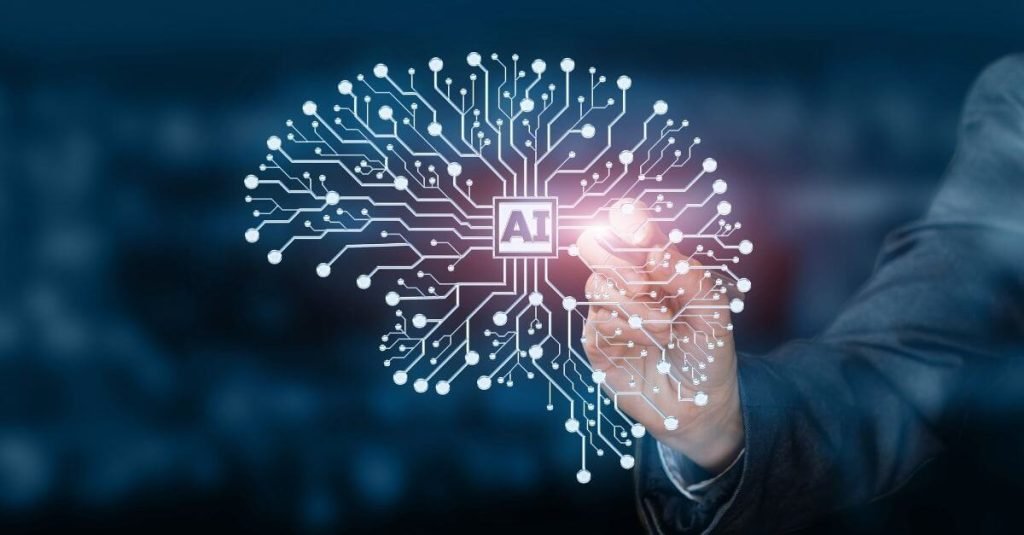
In the ever-evolving landscape of technology, artificial intelligence has been a force majeure, disrupting industries, shaping economies, and transforming the way we live and work. As we cast our eyes towards 2033, the AI market’s trajectory is anything but linear or predictable. Yet, as businesses, innovators, and policymakers, we must endeavor to chart this course with as much precision as possible.
The global AI market has grown exponentially in the past decade, and this trend shows no signs of slowing down. By 2033, we can expect AI to have permeated every sector, from healthcare to finance, manufacturing to education. As we stand on the brink of what some may call the ‘AI revolution’, let’s delve into the factors that could shape the future of this dynamic market.
Industry-Wide Adoption
The adoption of artificial intelligence across various industries will continue to accelerate. AI’s capability to analyze large data sets, improve decision-making, and drive efficiency will make it an indispensable tool. Industries that were once hesitant are now likely to embrace AI to remain competitive. In healthcare, for instance, AI could enable personalized medicine, improving patient outcomes at reduced costs. In finance, AI-driven algorithms could revolutionize risk assessment and fraud detection.
Regulatory Landscapes
One of the most significant factors that will influence the AI market is regulation. Governments around the world are beginning to recognize the need for comprehensive AI governance to ensure ethical standards, protect privacy, and maintain security. By 2033, expect a global framework that facilitates AI innovation while safeguarding society’s values.
Technological Breakthroughs
The rate of technological innovation in the AI space has been staggering, and we’re bound to see breakthroughs that will redefine what’s possible. Quantum computing, for instance, has the potential to supercharge AI’s data-processing capabilities. Breakthroughs in machine learning algorithms will also continue, leading to more sophisticated and autonomous AI systems.
The Talent Pool
As AI becomes more complex, the demand for skilled professionals will skyrocket. By 2033, the AI talent pool will need to expand to include not just data scientists and engineers but also ethicists, policy-makers, and interdisciplinary experts. The education sector will need to adapt, offering curricula that meet the demands of an AI-driven economy.
Ethical and Social Implications
The ethical and social implications of AI are perhaps as significant as its technological advancements. The discussion around AI ethics will evolve into enforceable standards, addressing issues like bias, transparency, and accountability. Society’s relationship with AI will be a defining aspect of its market development.
Economic Impact
AI’s contribution to the global economy will be measured in trillions of dollars by 2033. Beyond its direct economic impact, AI will play a pivotal role in addressing some of the most pressing challenges we face, such as climate change and resource scarcity, potentially unlocking new pathways for sustainable growth.
The transformation we anticipate in the AI market will also be characterized by the democratization of technology. As AI tools become more user-friendly and accessible, small businesses and startups will have the opportunity to leverage AI to innovate and compete with larger corporations. This leveling of the playing field could lead to a surge in entrepreneurship and a wave of creative solutions to everyday problems.
As we look to the horizon, the intersection of AI with other emerging technologies will also come into play. The convergence of AI with the Internet of Things (IoT), blockchain, and augmented reality (AR) will spawn entirely new industries and services. Imagine smart cities with AI-driven public services, supply chains with impeccable efficiency, and educational experiences that are immersive and personalized.
Partnerships between academia, industry, and government will be crucial in nurturing an ecosystem that supports AI growth. By fostering collaboration, we can ensure that advancements in AI are not only technically sound but also socially beneficial.
In summary, the global AI market by 2033 will be a testament to human ingenuity and technological progress. While the trajectory may be unforeseen, our commitment to steering this progress towards a future that uplifts and empowers humanity must be unwavering. The next decade will indeed be a pivotal chapter in the story of artificial intelligence.
Wrapping up, the fusion of AI with human creativity and strategic foresight will push the boundaries of innovation. By 2033, we’ll likely see AI systems that can learn, adapt, and possibly even understand emotional contexts, leading to more natural human-computer interactions. The ethical design of these systems will be paramount to ensure they augment our lives without infringing on our values and rights. As we embrace this future, we must cultivate a culture of lifelong learning, ensuring that every individual has the opportunity to understand and work alongside AI. This is not just about shaping technology—it’s about shaping the future of humanity itself.
Final Thoughts
Forecasting the trajectory of the global AI market is no easy feat. However, one thing is certain: the impact of artificial intelligence by 2033 will be profound, far-reaching, and, in some respects, entirely unforeseen. As we venture into this uncharted territory, our focus must be on harnessing AI’s potential responsibly and ethically, ensuring that its benefits are equitably distributed across society. The future is not written in code; it’s a canvas upon which we must thoughtfully paint.



